Description
$2.50 INDIAN HEAD GOLD MS-63 COIN
NGC
The quarter eagle, the United States’ gold coin with a $2.50 face value, was set for a visual overhaul during Theodore Roosevelt’s presidency. The original intention was for this coin to take the larger eagle coin’s recently introduced design, but subsequent developments redirected the project. At 18 millimeters in diameter, this quarter eagle was to be smaller than the Saint-Gaudens eagle, so-called as the sculptor Augustus Saint-Gaudens had designed it shortly before his 1907 death. However, the U.S. Mint struggled to fit the legally mandatory inscriptions on a coin this small.
This prompted the creation of entirely new designs which would allow those inscriptions to be accommodated. The job of making those designs fell to Bela Lyon Pratt, a Connecticut-born sculptor who crafted the head of what was recognizably a male Native American. Before this design was produced, Saint-Gaudens had placed an Indian-style headdress on Liberty for the obverse of the eagle coin, which had $10 as its face value. However, he had not attempted to make Liberty’s facial features appear Native American.
Therefore, drawing inspiration from Native American culture for the look of a U.S. coin intended for circulation was, at this time, considered unusual. Furthermore, the specific Native American male on this quarter eagle was criticized by numismatist Samuel Chapman for looking “emaciated.” That complaint was made only the month after the coin began circulating. However, 62 years later, Cornelius Vermeule, an art scholar, dismissed that charge. He went on to praise the coin and the counterpart half eagle coin of identical design for, in his view, appearing more imaginative and daring than coins from nearly any other U.S. coinage issue.
Though the 0.12094 troy ounces of gold per coin provides color and, therefore, visual attractiveness, this metal is hardly just eye candy. The .900 gold here is more secure in value than the U.S. dollar as a currency. If economic trouble lands a severe blow to this currency’s value, this gold would likely continue to have the same value as it did previously. This Indian Head variant of the quarter eagle could also grow in value as public interest in its period of mintage grows. While this period’s first year was 1908, when Theodore Roosevelt was about to depart the presidential office, its final year was 1929. At that point, the aforementioned President’s namesake and relative, Franklin Delano Roosevelt, was four years away from becoming President.
The latter Roosevelt’s administration recalled gold coins in 1933. Coins the federal administration did receive were melted and this development has added to the rarity of many varieties of gold coin. Such coins are particularly desirable when in a highly-graded condition. With the listing here, we promote a common date Indian Head quarter eagle that is in an MS63-graded state. This grade is one of the lowest Mint State pegs of the numismatic grading scale originally created by the American psychologist William Herbert Sheldon. An MS63 disc may show in clusters throughout its surface small contact marks. It could also have highly noticeable hairlines and striking defects. However, its condition should still impress.
Features of the Common Date $2.50 Indian Gold Quarter Eagle MS63:
Weight of slightly above 4 grams
Probability of Denver-origin mint mark
Thirteen stars lining Liberty side

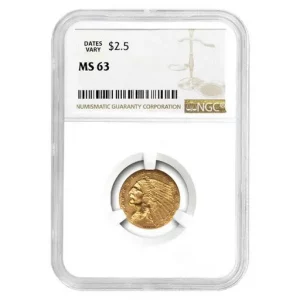
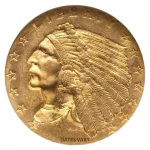
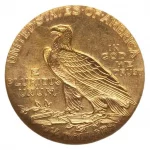





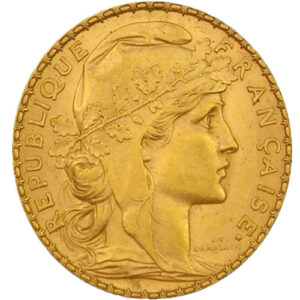

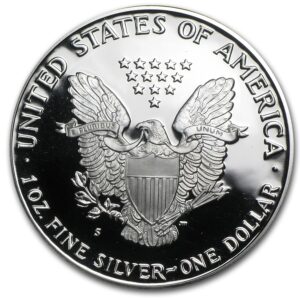






There are no reviews yet.